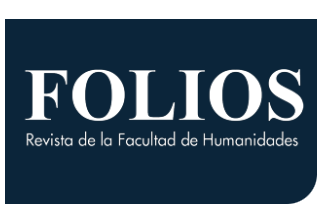DOI:
https://doi.org/10.14483/22487085.161Published:
2005-01-01Issue:
No 7 (2005)Section:
EditorialEditorial
Keywords:
Editorial (en).Downloads
How to Cite
APA
ACM
ACS
ABNT
Chicago
Harvard
IEEE
MLA
Turabian
Vancouver
Download Citation
Colomb. Appl. Linguist. J., 2005 vol: nro:7 pág:4-6
Editorial
Amparo Clavijo Olarte
Dear Readers
Welcome to our seventh issue of the Colombian Applied Linguistics Journal. This time we offer a collection of eight articles that illustrate some of the concerns of critical applied linguistics related with praxis, social, cultural and political domains, critical social inquiry and self reflexivity. We believe that the articles in this issue, to a certain extent, address and contextualize these concerns.
Critical Applied Linguistics for Pennycook (2001) [1] is "a way of doing applied linguistics that seeks to connect it to questions of gender, class, sexuality, race, ethnicity, culture, identity, politics, ideology and discourse" (p.10). The domains of critical applied linguistics that help address the concerns above mentioned are critical literacy and critical discourse analysis, language teaching, language testing, language planning and language rights, and language, literacy and workplace settings.
The context of English Education in Colombia requires that practitioners, researchers, school administrators, governmental and private institutions dealing with language policies and practices become aware of concerns and issues related to EFL learning and teaching and adopt a more critical and inclusive perspective of language education that contribute to becoming professionally competent in a foreign language (whatever it may be) and at the same time develop a sense of identity and pride for their own country and its language.
We believe that through articles that raise individuals' awareness about the importance of valuing learners' linguistic and cultural funds we can construct knowledge that is relevant to local and global contexts through meaningful teaching and learning processes. In this regards, the authors of the first article about the Implications of the Common European Framework implementation in the Colombian socio-cultural context efficiently discuss a local position that defends more democratic participation in decisions made that affect a considerable population of English teachers and learners and illustrate the social, cultural and political concerns of Critical Applied linguistics within the domain of language planning.
The following two articles Voices in a Preservice Teacher Discussion Group and Teacher Voice: how is it shaped? share a common concern on teacher's voice. The first one centers on preservice teacher discussion groups and focuses on the dominant voices of teachers in a preservice teacher discussion group, and the second one deals with political relations of power, government policies and curricular decisions that shape the voices of inservice teachers. The discussions illustrate concerns of critical social inquiry since they explore language in social contexts to study teachers' voice in relation to their academic communities.
The articles The Design of Reflective Tasks for the Preparation of Student Teachers and Conditions for Monograph Projects by Preservice Teachers discuss concerns of critical applied linguistics related with praxis. They describe two vital moments of preservice teacher education, the student teaching practicum and the writing of the monograph. Both studies were carried out at the same educational context, Universidad Nacional de Colombia and contribute to reflect upon student teachers' development and fulfillment of the requirements for undergraduate studies.
In a more theoretical basis the article Searching for Coherence in Language Teaching addresses language teaching to reflect extensively on the teaching competencies in English as a Foreign Language. It centers on the need of practitioners to constant question themselves for permanent self-reflexivity. For Pennycook a self-reflexive position suggests that critical applied linguistics is concerned with raising a host of new and difficult questions about knowledge, politics and ethics.
From a sociocultural perspective within critical literacy, the author of the article In Consideration of Latino Children: A Sociocultural Perspective of Literacy Skills Development Using Literature Circles discusses a pedagogical experience that encourages reflective practitioners to consider a funds of knowledge perspective that connects home and school literacy practices through the use of culturally appropriate, meaningful and relevant children's literature in classrooms. Thus, contributing to have a democratic and participatory education for children.
Finally, the article Articulating English to Specific Content Areas presents a reflection around the teaching of English for Specific Purposes that led to pedagogical action. It reports on a project implemented as an alternative to articulate teaching methodology with content and language through the use of Content Based Instruction (CBI). We expect that this collection of articles provide ideas for thoughtful reflection and classroom innovations to the readers of our journal.
NOTAS
- Pennycook, A. (2001). Critical Applied Linguistics. London: Lawrence Erlbaum Associates, Publishers LEA.
Metrics
License
This work is licensed under a Creative Commons Attribution-NonCommercial-NoDerivatives 4.0 International License.
Attribution — You must give appropriate credit, provide a link to the license, and indicate if changes were made. You may do so in any reasonable manner, but not in any way that suggests the licensor endorses you or your use.
NonCommercial — You may not use the material for commercial purposes.
NoDerivatives — If you remix, transform, or build upon the material, you may not distribute the modified material.
The journal allow the author(s) to hold the copyright without restrictions. Also, The Colombian Apllied Linguistics Journal will allow the author(s) to retain publishing rights without restrictions.









